NiceHCK F1 PRO Planar IEMs – Actually Sounds Nice Enough
NiceHCK is a $99 USD IEM or In-Ear Monitor you’d typically call an earphone with silicone tips, with a new generation planar magnetic driver, 14.2mm in size, a 2um thin diaphragm, and with N55 high-precision magnets. Today we will review the F1 pro and compare it to other entry-level IEMS including Kefine Klanar (119 USD), Simgot EM6L (109 USD), and HIDIZS MS3 (109 USD).

Introduction
Today we review our first IEM from the NiceHCK company, and F1 PRO is an entry-level IEM which comes with detachable cables and a nice build quality. With the growing popularity of Chifi IEMs I figured it is mighty time to explore the offerings of less known companies that typically are not part of my review repertoire. As an Amazon Influencer, I earn from qualifying purchases, and using the purchase links in my reviews helps me maintain this website and Youtube Channel. NiceHCK has provided the sample for this review, in exchange for my honest opinion.

PROs – Wide, Holographic soundstage, exceptional timbre which sounds natural right away, without any obvious dips or peaks in the frequency response, comfortable despite using metallic shells, rich midrange with strong emotion and good contrast, sounds more like a full sized headphone or a pair of speakers than it sounds like a pair of IEMS, they are able to convey space and width really well.
Cons – Metallic shell not quite as comfortable as resin options, bass can be a bit shy.
Product Link
You can grab one here – https://amzn.to/4bbFSmB
Build Quality/Aesthetics/Fit/Comfort
Every single time I start a review, I do so without expectations, to allow myself to be surprised and impressed by the quality and fitting I am seeing, and this can happen both ways, positive and negative. F1 PRO actually starts on a good note, as the tips included in the package are of a good quality, and it fits quite nicely in my ears, despite having a somewhat large and heavy shell. The shells are made of metal, but there’s strong ventilation as they don’t have driver flex, nor any kind of fitting issues, and even better, F1 PRO has detahcable cables, with the one I was able to get being ended in a 4.4mm balanced connector.
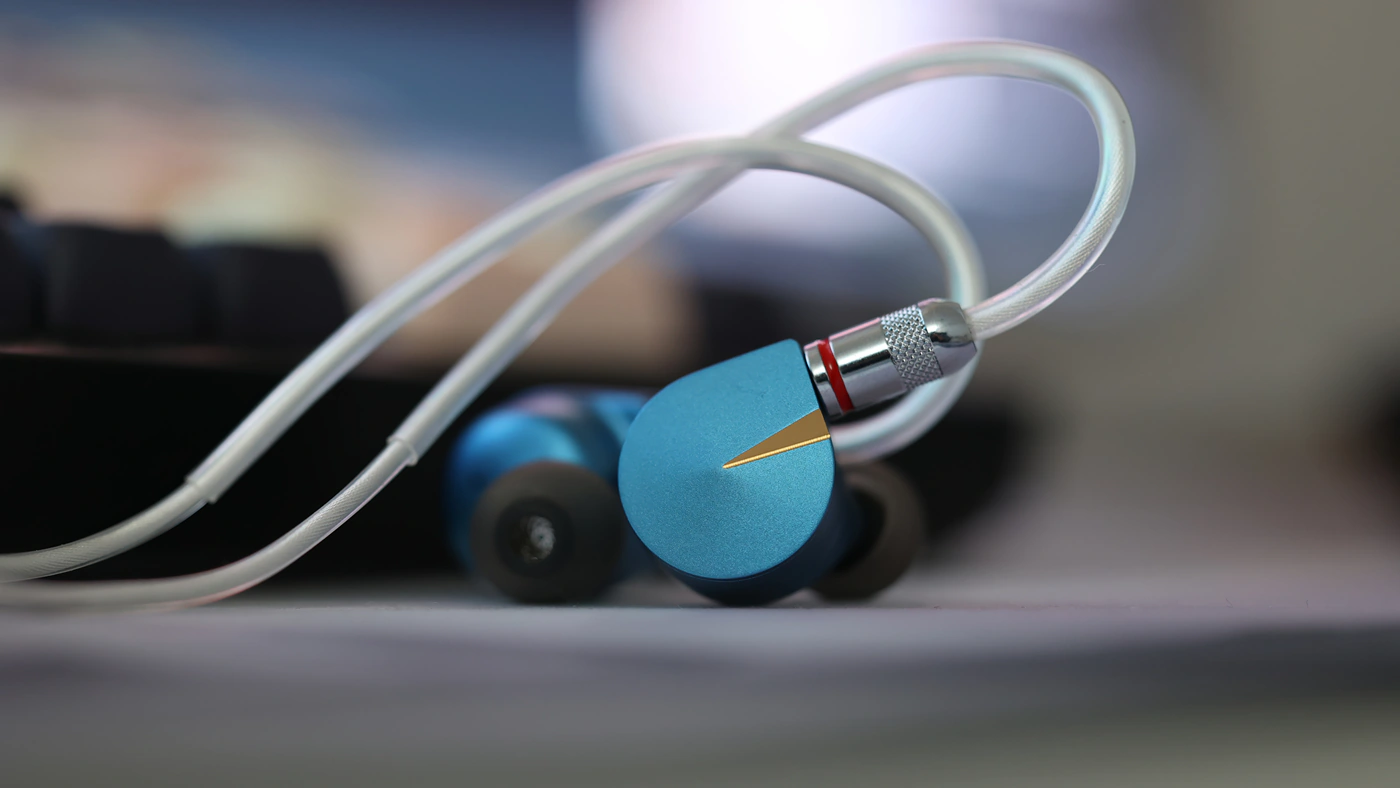
The driver at the heart of the F1 PRO is planar magnetic, but it is not the largest driver I reviewed even this month, as iBasso 3T-154 takes that spot, but still F1 PRO has a pretty large driver, at 14.2mm. The diver itself embeds a good amount of features, including the strong N55 magnets for precision, and the 2um diaphragm which is easy to move and reacts instantly to impulse.

The Impedance of F1 PRO is 16 OHMs, and the Sensitivity is 104dB/mW, but the volume increase is not linear, and it gets fairly loud fairly fast, but above around 75dB, it eats more and more power to get louder. If you read the technical data in the marketing materials you will find a FR or frequency response graph, and it seems to indicate the signature rather well, but you just have to keep in mind that usually when companies measure their products, they use a strong smoothing factor, so there may be slightly more peaks and dips, although you can get a general idea of the bass to treble to midrange relative amounts from this kind of graph.
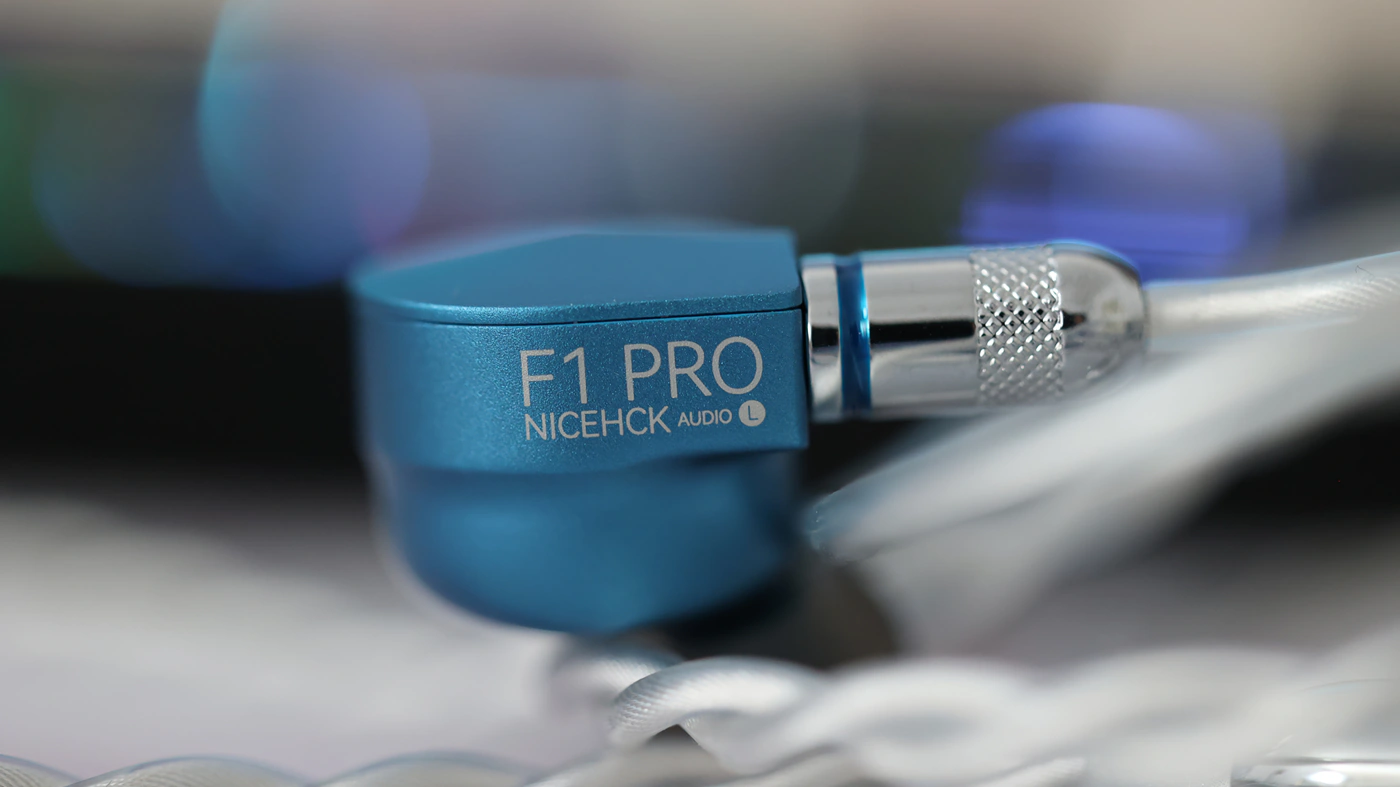
To drive and test the F1 PRO I’ve been using a selection of sources including Aune Yuki, Dethonray Listening M1, IKKO ITX05, Shanling UA4 and HIFIMAN EF600. Generally, F1 PRO has a brighter, neutral sound and it sounds best with a warm, smooth and deep sounding source, and it has a wide soundstage already, so sources which enhance depth will compliment the signature of the F1 PRO the most, such as Shanling UA4, Dethonray Listening M1 or Dethonray DTR1+.
Sound Quality
Overall Signature – NiceHCK seems to go for a really clean and crisp tuning with the F1 PRO, emphasizing resolution, detail and precision above warmth and romantic elements in music, so F1 PRO sounds accurate, has a short decay for each musical note, quick sound, but still they manage to convey space and width well, painting a holographic and wide sound that seems boundless with most music, rather than narrow and intimate as is the case usually with entry-level IEMs.

Bass – The bottom end is neutral, clean and doesn’t have as strong emphasis, allowing for more volume in the treble and midrange, as the bass takes a step down and is presented behind the treble, but about at the same level as the midrange. Although the measurements show the bass to have a 10dB of volume and presence above the midrange, that seems to be noticeable only for a specific part of the sub bass, between 35Hz and 50 Hz, with the mid bass having very little bloom and warmth. The overall tuning and signature is thus rather cold and analytical in nature. If you’re now afraid they’ll be too bright, rest assured, it is towards the V-Shaped end of the spectrum, you don’t miss body and presence for most instruments, but bass guitars are never the central element of a song, nor is the bassline.

Midrange – Having the heart of a lion, NiceHCK F1 PRO brings the midrange to the spotlight, allowing for voices, guitars, pianos and most instruments to take the central place in their presentation. The general tendency is for the upper midrange to have a bit more energy and presence, so female voices are presented with more emphasis than male voices, and as the bass doesn’t have any bloom or extra warmth, most instruments have a very neutral presentation.
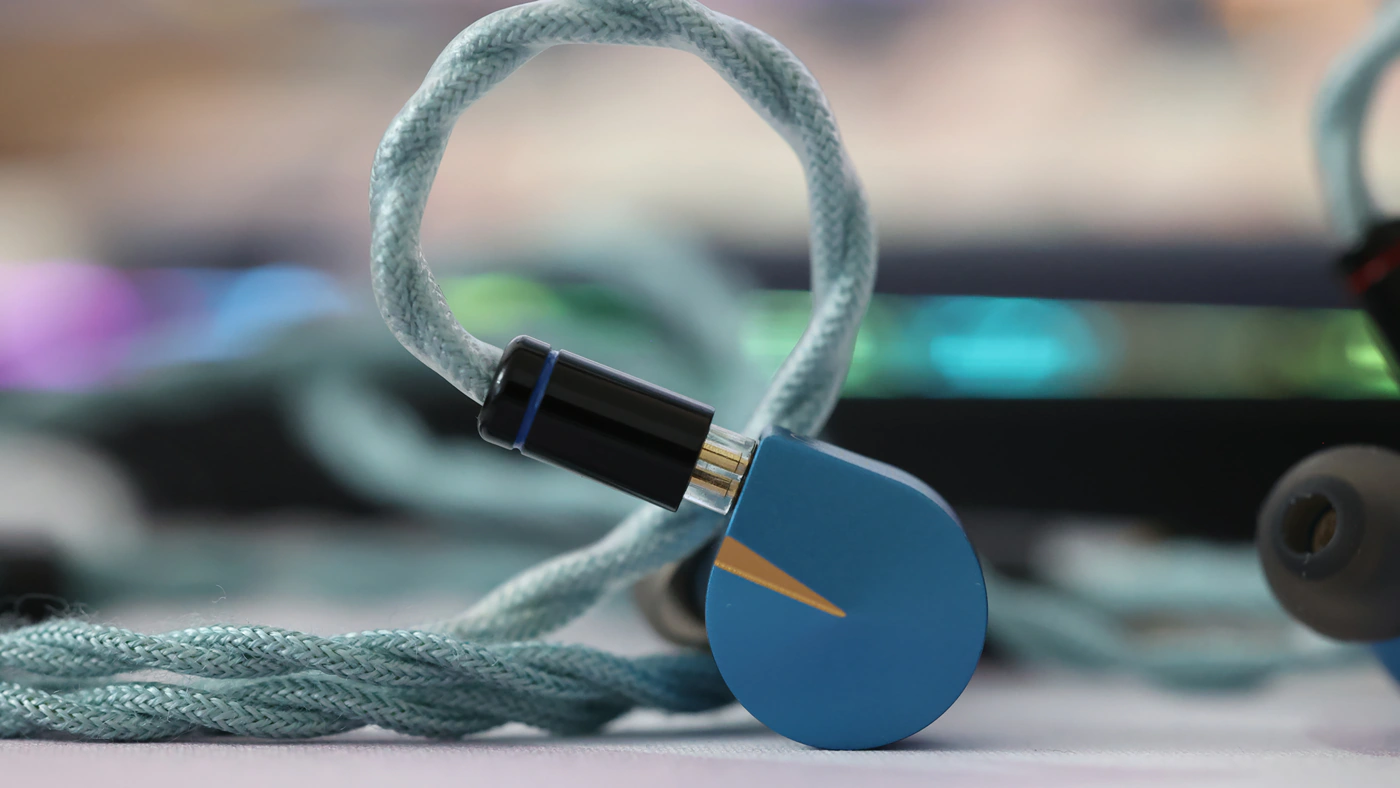
Dynamics / PRaT / Textures – We have a fast driver response, which creates sharp and quick textures, strong resolution, and will easily reveal both the good and the bad in music. You can expect a rich midrange, with an emphasis on resolution and clarity, but little forgiveness for sharp, harsh or sibilant sounding recordings, which will be presented as they are, and have their deepest secrets revealed to the listener.

Soundstage – The stage is wide, holographic, and instrument separation is great, at least compared to what we typically hear from most 99 USD IEMS. F1 PRO conveys a strong feeling of width and pushes all the background instruments slightly forward, but strongly in the lateral dimension. Since the bass is rather neutral, the stage seems to be ovaloid, with more extension in the lateral plane than the depth one.

Volume Control – The sound is clean and crisp at low volumes, and it gets more aggressive, punchier but also slightly more compressed dynamically at louder volumes, bringing forward the background elements, and creating a lively presentation where you hear everything quite loud. I also noticed that F1 PRO eats volume quite a lot, the volume increases quickly up to 75dB – 85dB, allowing for low control with most sources, after which it takes a lot of extra to get louder, somehow it feels like they are designed to be listened between 75 dB and 85 dB.

Treble – F1 PRO sounds fairly bright and airy, painting the treble up to 16-18 kHz with strong energy and a sharp presentation. There’s a good sense of space and resolution in the highs, which are presented at a similar level relative to the midrange and the bass, or rather even slightly louder than the midrange.
Comparisons
NiceHCK F1 PRO vs Simgot EM6L (99 USD vs 109 USD)
Build – EM6L looks and fits well, although the cable F1 PRO comes with is of a better quality. EM6L has a more ergonomic, somewhat lighter, but larger shell, and the default tips of EM6L are slightly worse than those of F1 PRO. Both IEMS feel natural while being worn, but F1 PRO offers a higher passive noise isolation, and is less dependent on the source quality compared to EM6L.

Sound – Sonically, EM6L has been an instant favorite of mine, and F1 PRO sounds similar, both have similar strengths and shortcomings, both have a stronger treble, but EM6L seems to try to follow the H-2019 Curve which makes it sound warmer, with more mid bass bloom and less focus on the midrnage.
NiceHCK F1 PRO vs HIDIZS MS3 (99 USD vs 109 USD)
Build – The comfort of MS3 is slightly better, thanks to the more ergonomic body, although in person MS3 has a slightly larger shell and also a slightly heavier shell than F1 PRO. The default cable is about equal in quality, although F1 PRO has a light colored cable, while MS3 has a dark – copper colored cable. The passive noise isolation of F1 PRO is stronger, and they are harder to drive, also less sensitive to source quality and source noise.
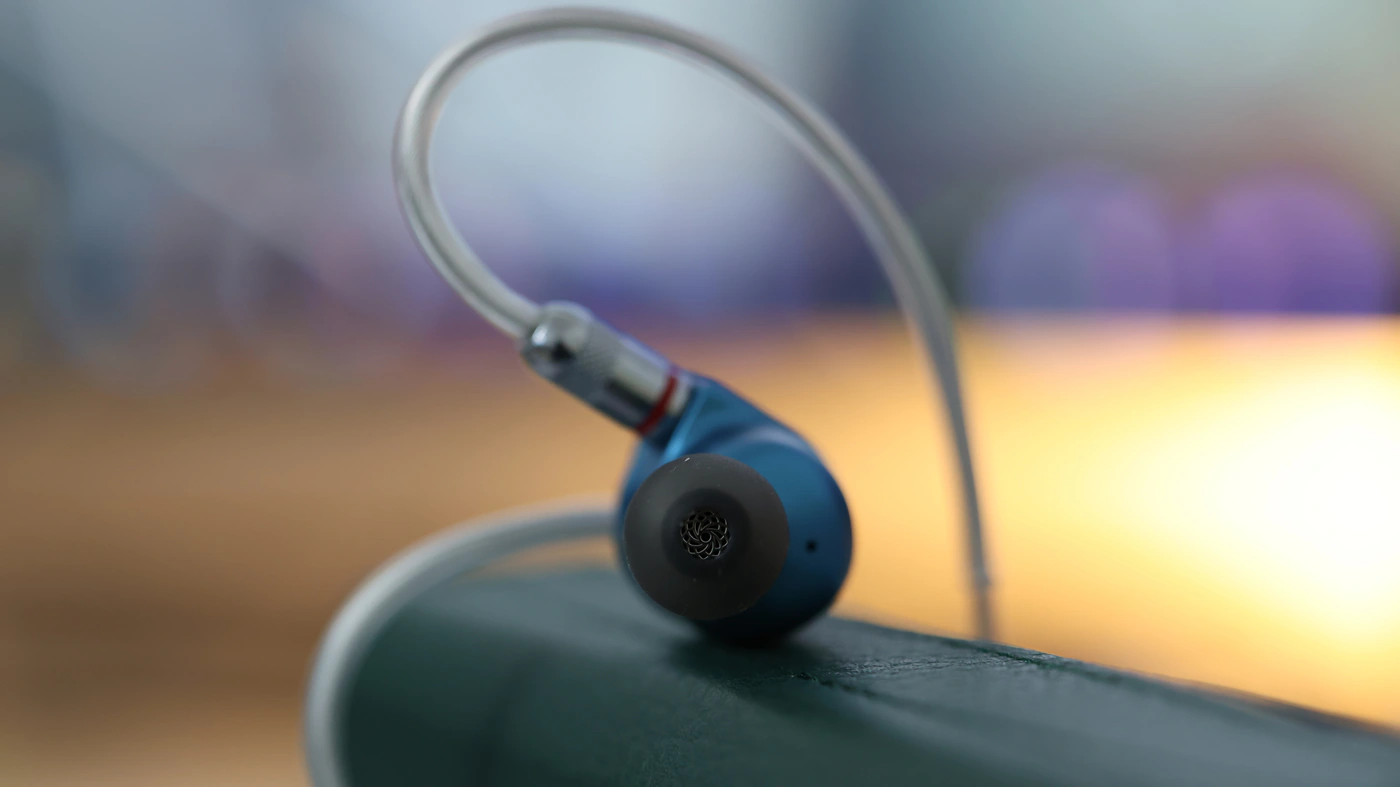
Sound – Sonically, MS3 has targeted the H-2019 Curve, while there is no evidence that F1 PRO is trying to go for the same FR, so in my direct comparison, MS3 sounds warmer, has more mid bass bloom, a warmer midrange, and both have a strong and airy treble. The soundstage is equally wide and the sound equally engaging for both IEMS. Just as with Klanar, MS3 is the warmer tuning with more mid bass bloom compared to F1 PRO.
NiceHCK F1 PRO vs Kefine Klanar (99 USD vs 119 USD)
Build – Klanar is a bit larger, also uses a planar magnetic driver, and the general comfort is a bit better with the F1 PRO, which has a slightly better cable from the factory, slightly better ear tips, and allows for slightly more passive noise isolation. F1 PRO is a bit harder to drive, but slightly less sensitive to source noise.

Sound – Sonically, Klanar is warmer, thicker and has the emphasis placed on the low end and the bass, compared to F1 PRO. This being said, both IEMs sound natural and correct out of the box, and both have a natural tonality, so you never feel like either has a wrong sound, rather Klanar is for you if you know you like a bit of extra bloom, extra warmth and extra bass in your music, while Klanar is perfect if you prefer a really neutral and flatter tuning.
Value and Conclusion
For the meager but ultra popular price point of 99 USD, NiceHCK provides a clean and detailed sounding IEM with a good comfort and good build quality too, which can provide hours of fun on end, without any fatiguing element, both sonically and in comfort, scoring an excellent value rating.
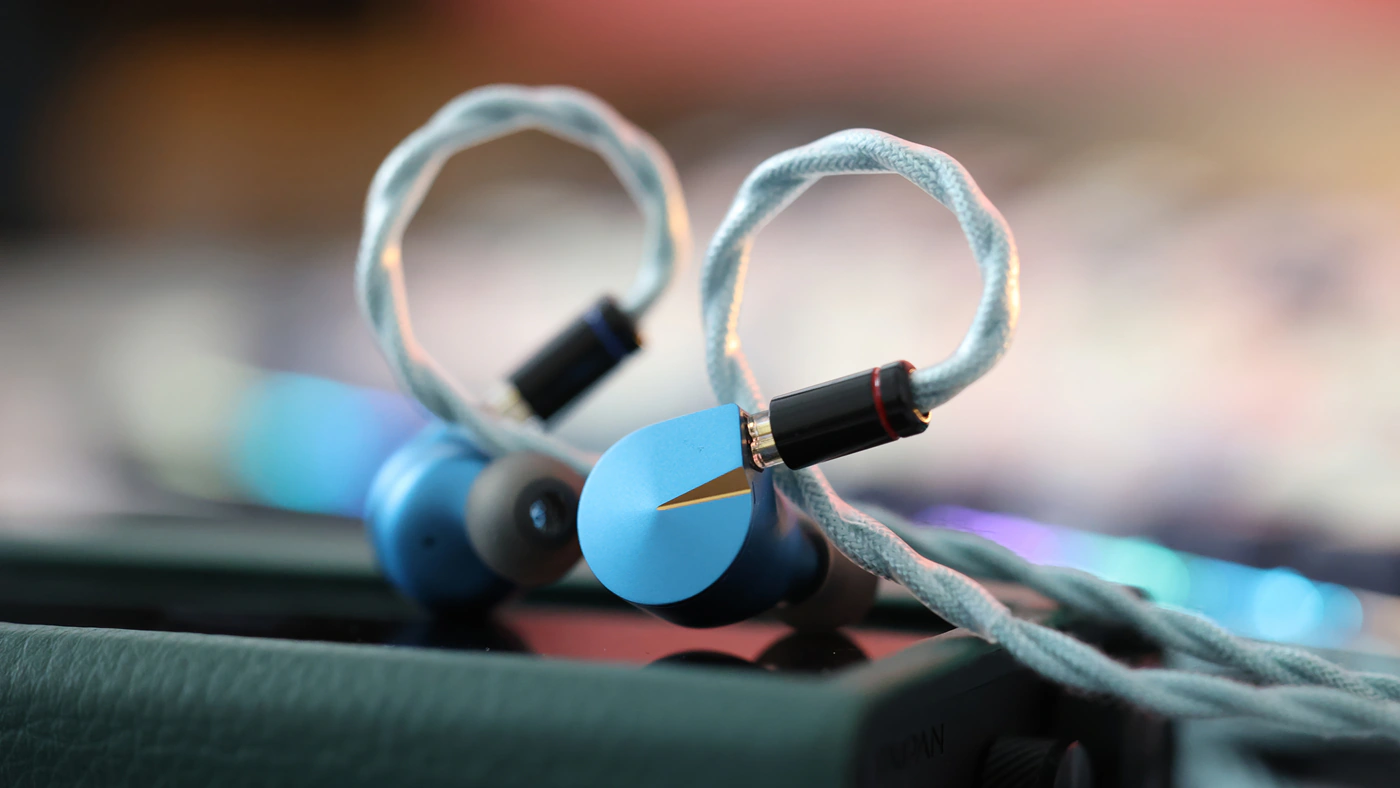
At the end of the day, if you’re looking for the exceptional price / performance rating that we typically get from Chifi IEMS, NiceHCK is an interesting alternative to the other Chifi brands I reviewed so far, and F1 PRO is an excellent example of a wide, natural sound that will instantly feel natural for anyone listening to it.
Product Link
You can grab one here – https://amzn.to/4bbFSmB
Technical Specifications
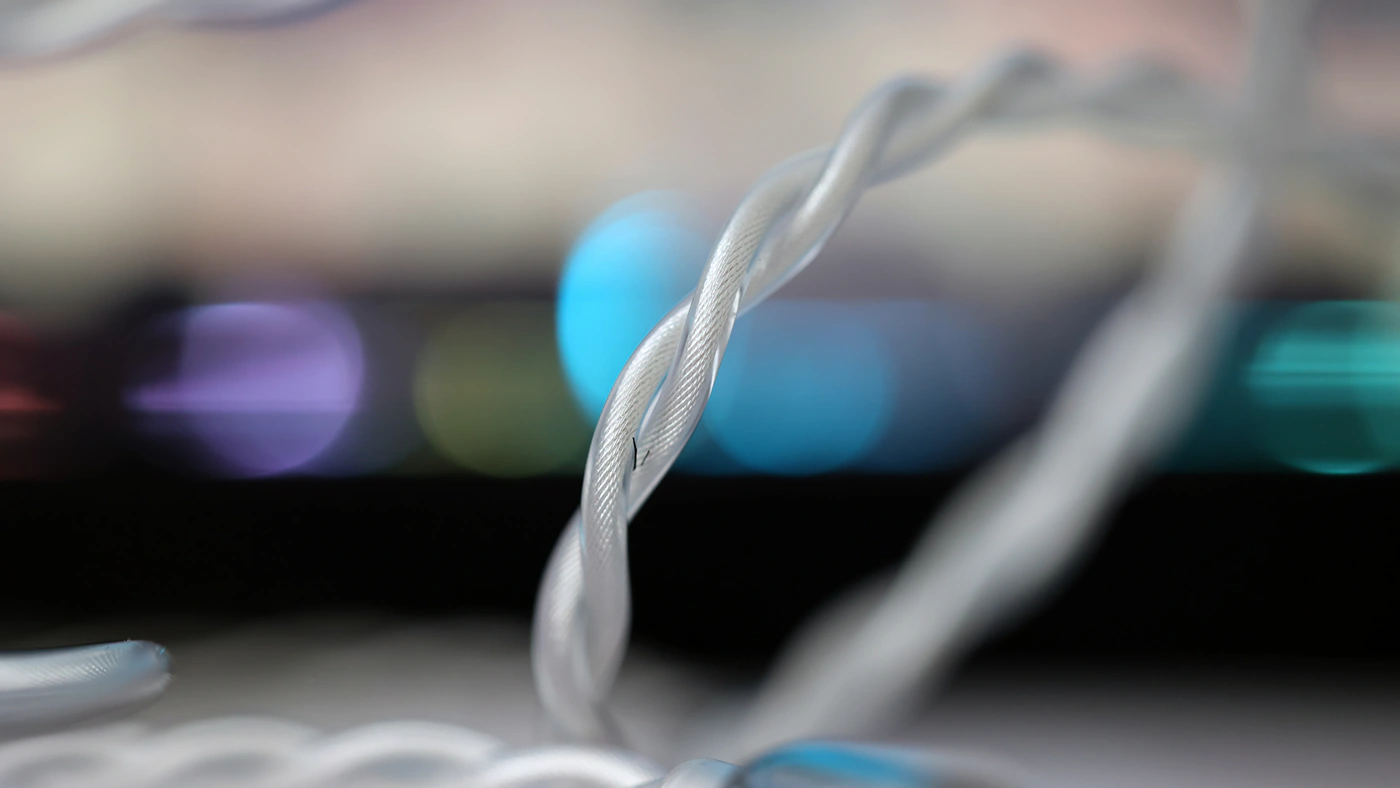
Impedance – 16Ω.
Sensitivity – 104dB/mW.
Frequency Response – 20Hz-28kHz.
Connector Type – 0.78mm 2-pin.
Termination Plug – 3.5mm and 4.4mm (choose while purchasing).
--- Please remember to stay safe, and always have fun while listening to music!---
- If you have a dime to spare, please donate, and help us! It would make the day brighter for me and my wife-
Full Playlist used for this review
We listened to more songs than those named in this playlist, but those are excellent for identifying a sonic signature. I recommend trying most of the songs from this playlist, especially if you’re searching for new music! The playlists are different for Spotify, Tidal and Youtube, and based on the songs I enjoy and are available on each!
https://www.youtube.com/playlist?list=PL_cjBXGmwSHSdGcwuc_bKbBDGHL4QvYBu
https://open.spotify.com/playlist/5J3oloz8Riy9LxEGenOjQ0?si=979ba4f082414be7
https://tidal.com/browse/playlist/330fd544-8e5b-4839-bd35-676b2edbb3d5
--- Contact Us ---





